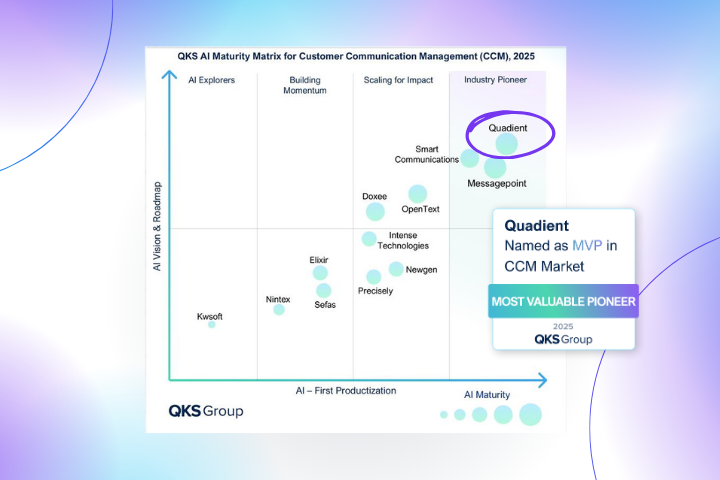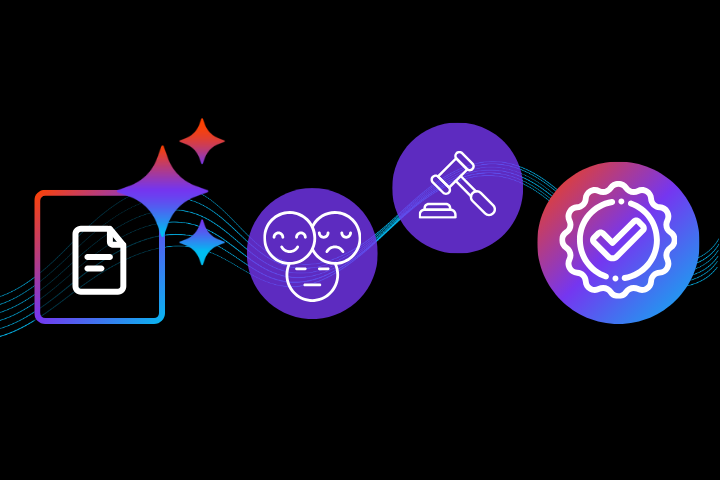Introduction
Many small to medium-sized businesses (SMBs) rely on manual processes to send critical transactional customer documents such as invoices, statements, notifications, and contracts. Manual processes result in higher operational costs and lower employee productivity. They also expose your company to the risk of human error.
To remain competitive, businesses need to maximize their velocity and make the most of lean teams and resources. Eliminating inefficient manual processes via intelligent document automation is one way to achieve this objective.
What is document automation?
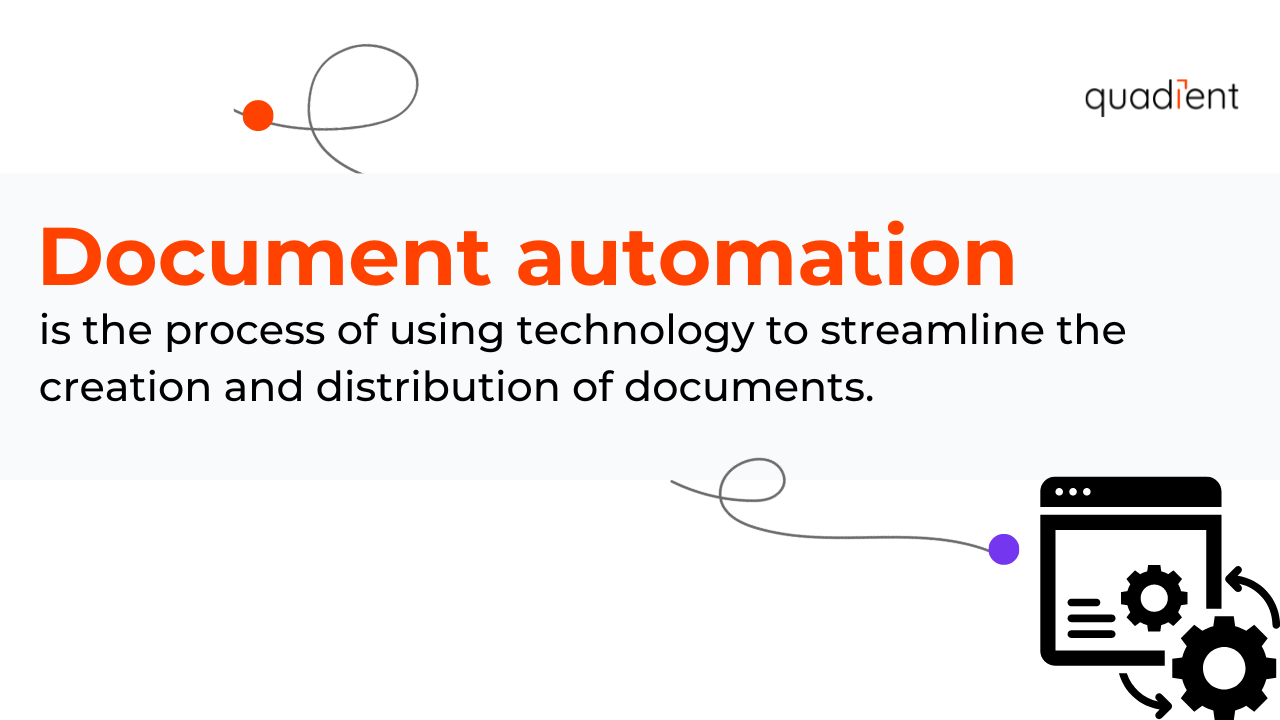
Document automation is the process of using technology to streamline the creation and distribution of documents. This can include anything from simple document generation to more complex document management systems.
There are many benefits to automating document creation and management. Perhaps the most obvious is that it can save time and effort. Automating repetitive tasks also helps to:
- improve accuracy and consistency
- free up staff for more value-added activities
- ensure compliance with regulatory requirements
Why is document automation important?
To thrive in this ever-changing business landscape, SMBs must adapt and meet consumer expectations to maintain positive relationships with their customers.
Communications that are personalized with targeted and engaging content and delivered via the customer’s preferred channel deliver a better experience. However, many SMBs are constrained by inefficient workflows and repetitive manual processes related to preparing, processing, and delivering customer documents. As such, these communications aren’t modernized for today’s demands, have a high operational cost, and are at risk for errors that are embarrassing, costly, and potential security issues.
How will document automation benefit my business?
Utilizing digital tools like document automation software enables SMBs to accelerate their digital evolution and optimize their workflow. Modernizing their operations and internal processes facilitates multi-channel document delivery, drive operational efficiency and delivers a better customer experience.
Implementing document automation provides a disciplined approach to managing your outbound communication process. Among its many benefits:
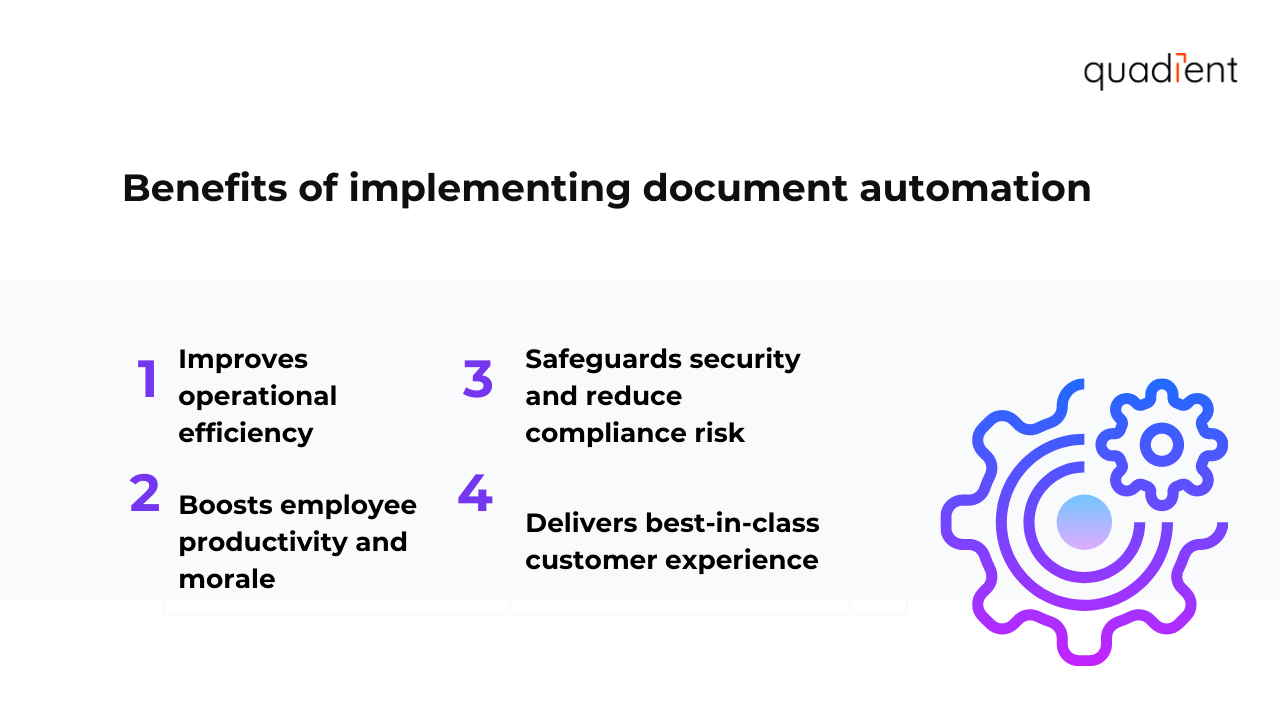
-
Improves operational efficiency
Does your staff manually pull exception documents, such as zero balance invoices? Do you spend valuable time double or triple-checking envelopes to ensure they contain the right materials?
Intelligent document automation solutions enable the programming of business rules based on specific criteria, to ensure that the right document always goes into the right envelope.
-
Boosts employee productivity and morale
Businesses that rely on manual labor to prepare, process and mail documents may be overlooking the impact that it has on employee morale and productivity.
Over time, repetitive manual tasks influence employee behavior and performance. A recent study uncovered the following observations:
- Employees became distracted and disengaged, which inevitably resulted in avoidable errors.
- Employees were more concerned with finishing monotonous manual tasks than ensuring accuracy. Even when they did not have a time limit and had an opportunity to double check their work,
AIM Consulting Associates, “How Automation Impacts Document Workflow: A Pilot Study”, 2020
Employees whose sole focus is repetitive tasks like printing, sorting, and stuffing mail suffer from low engagement and diminishing productivity over time. Businesses that implement document automation free up employees to take on higher-value, revenue-driving projects that motivate and empower them.
-
Safeguards security and reduces compliance risk
Document security is paramount. Businesses can no longer accept employees mishandling documents as simple human error. Aside from the potential legal repercussions in certain verticals, dissatisfied customers will likely elect to stop doing business with the company.
It’s crucial to customer retention and growth that businesses can guarantee that all documents are managed securely. Whether documents are produced on or off-site, businesses must ensure that protocols are in place to preserve document integrity across all delivery channels.
-
Delivers best-in-class customer experience
Today, customer expectations are higher than ever. Businesses that produce consistent, personalized outbound communications and deliver them through the customers' preferred channels deliver a better overall customer experience. They are more likely to stand out in the minds of their customers and among competitors.
Regardless of delivery method, migrating from ‘Dear Customer’ to ‘Dear Jane Smith’ is a fractional step, albeit an important one. Targeted messaging creates a dialogue, helps build long-term customer relationships, and reinforces your understanding of a customer’s needs.
Document automation solutions enable you to add targeted and personalized messaging and deliver documents via the print or digital channels that your customers prefer.
Automating your outbound communications processes delivers a wide range of benefits that will better prepare your business for the future.
Industries that can benefit from document automation include:
- Accounting
- Business services
- Financial services
- Healthcare
- Insurance
- Legal services
- Local utilities
- Manufacturing
- Property Management
- Print service providers
- Professional services
How to get started with document automation?
Now that you understand the benefits that document automation can bring to your small or medium business you may be wondering how to get started.
A good first step is to determine what stage your business is at in terms of your outbound mail process. Check out our customer communication report card to see how your SMB scores across these key business priorities.
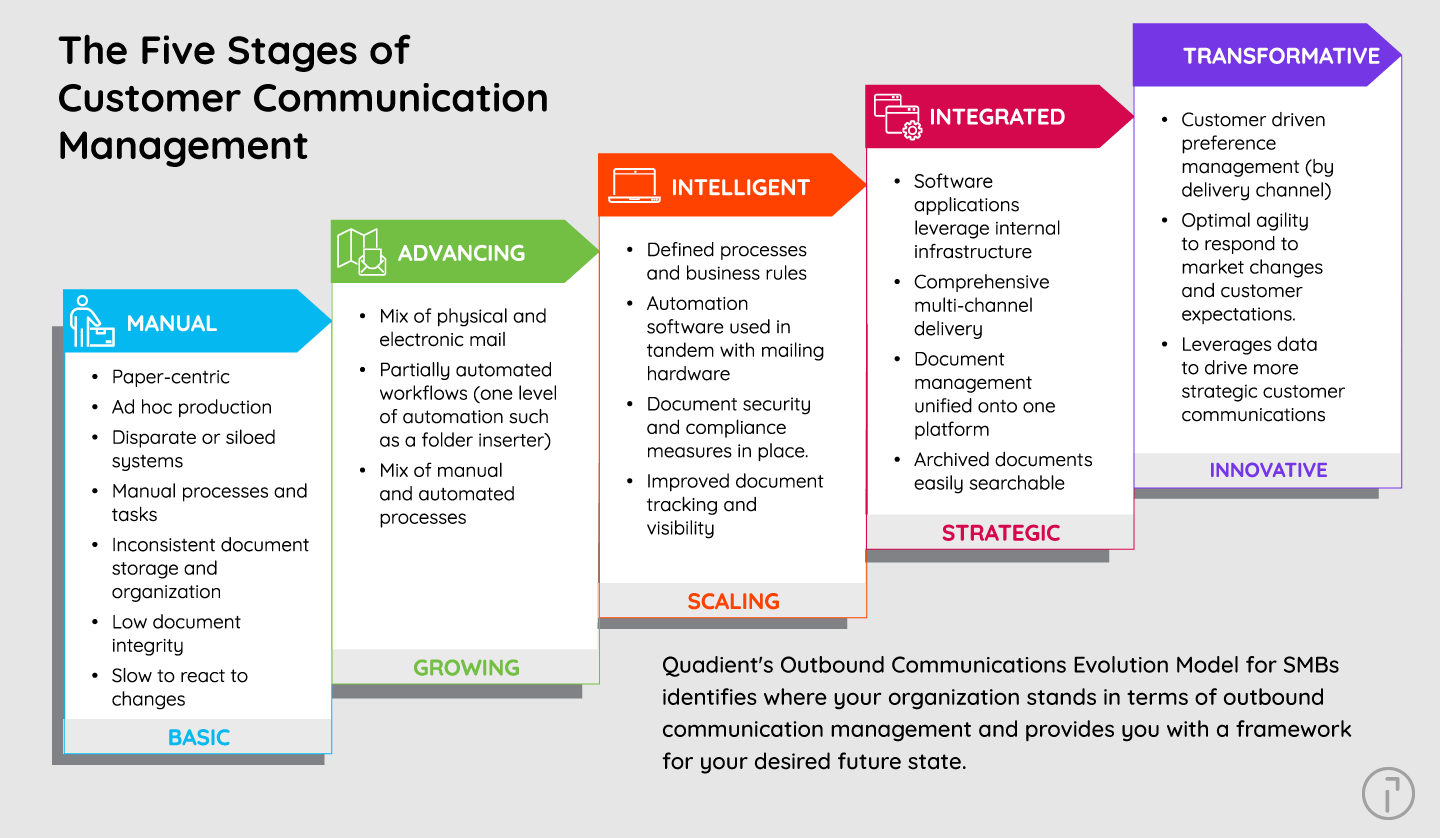
Customer communications maturity model for SMBs
A maturity model can help you identify what an optimized outbound communication process looks like and where your business might be falling short. It will help you classify where your business currently stands, as well as providing clear guidelines to propel your organization to the next level.
Quadient’s customer communication maturity model can help SMBs develop a roadmap to improve and optimize their customer communication strategy.
Our customer communications maturity model outlines the general characteristics associated with each stage of development. The stages range from manually preparing and distributing documents to utilizing an automated solution that easily fits into and works with your internal infrastructure.
Using this model, an organization can progress from merely handling documents administratively to a system that optimizes internal resources and delivers a seamless customer experience.
The chart below provides an overview of the maturity model and its incremental business impact as you progress forward. Overall, the maturity model will help you:
- Map current capabilities against a set of best practices for each consecutive level of maturity
- Create a roadmap by outlining what should be expected at each stage
- Visualize next steps and establish goals to stay on target
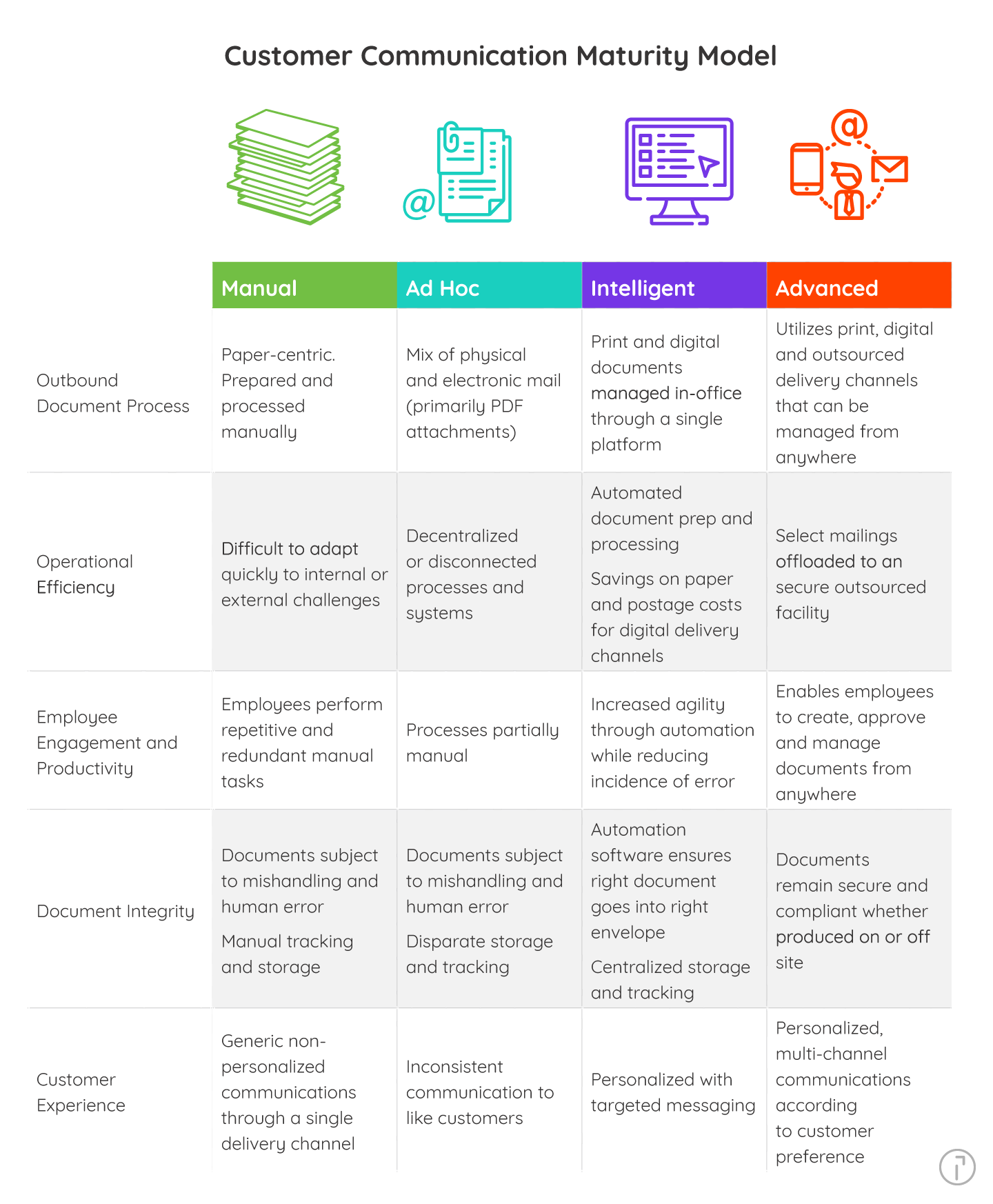
Read our whitepaper: Customer communication assessment guide: Update and upgrade outbound document processes to learn how to create a roadmap to transform your outbound document management process.
Conclusion
Effectively managed transactional communications reduce costs, improve profitability, and create a productive, efficient, and more highly engaged workforce. Most importantly, by automating outbound customer communications, SMBs gain the flexibility to adapt, emerge and evolve in an uncertain future. Intelligent document automation can streamline and optimize your existing processes to give you a competitive edge in today's business landscape.





